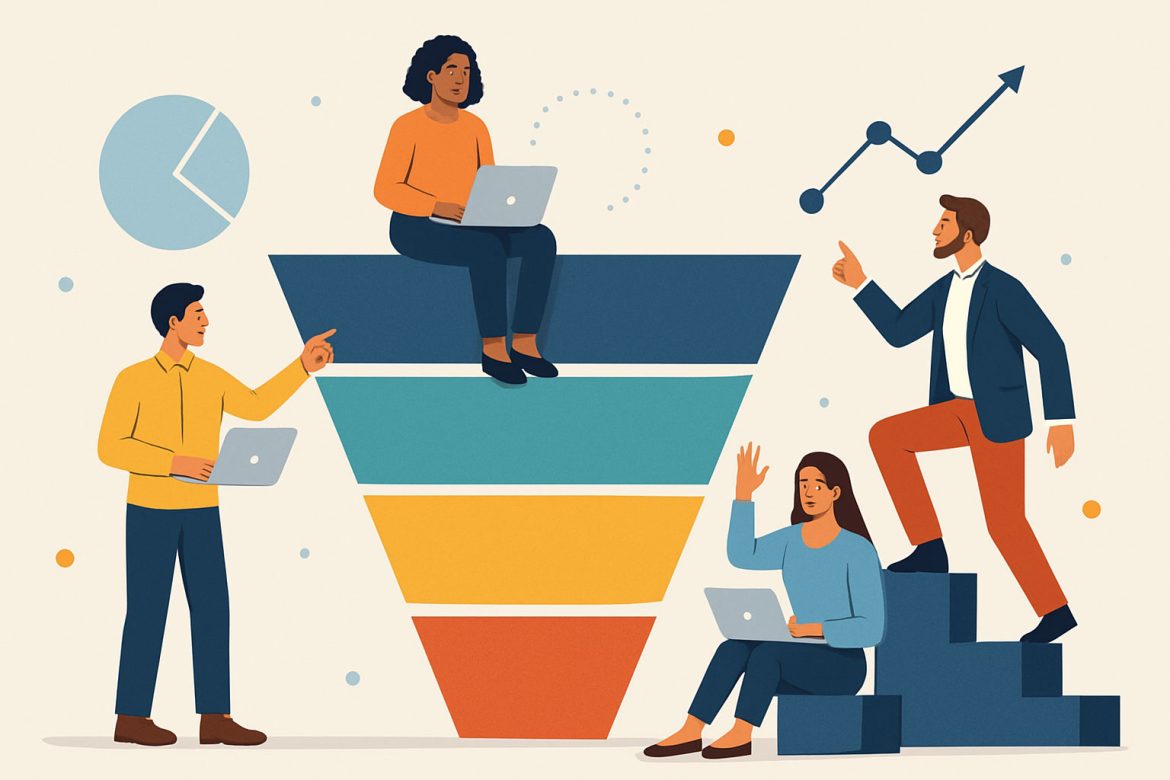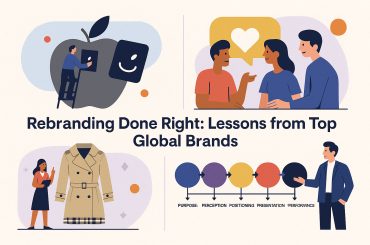“A funnel isn’t just a path—it’s the architecture of persuasion.”
In the dynamic world of e-commerce, building a funnel is not about pushing products—it’s about orchestrating trust, clarity, and value across every stage of a buyer’s decision-making journey. While the term “funnel” has become common in marketing jargon, few truly understand its strategic depth.
This guide deconstructs the modern e-commerce funnel, presenting it not as a fixed sequence but as a modular, behavior-driven system. Each stage is explored from a structural, psychological, and performance standpoint to help you engineer conversion at scale.
I. The Funnel Reimagined: What It Really Is
Let’s move beyond the traditional Awareness–Interest–Desire–Action (AIDA) framework. A winning e-commerce funnel today is:
- Multi-layered: Not linear but recursive and personalized.
- Data-informed: Driven by real-time behavior, not static assumptions.
- Cross-channel: Unified across search, social, email, and on-site.
It comprises three major dimensions:
| Stage | Goal | Key Metric |
|---|---|---|
| Top (TOFU) | Capture attention | CTR, traffic volume |
| Middle (MOFU) | Build consideration & trust | Add-to-cart, email signups |
| Bottom (BOFU) | Convert with clarity and urgency | Conversion rate, order value |
II. Top of Funnel (TOFU): Capturing the Right Attention
Objective: Introduce the brand and product to unaware but relevant audiences.
Methods:
- Paid social ads (Meta, TikTok) with storytelling angles
- Influencer content focused on problem/solution framing
- Blog posts targeting broad intent keywords
- Organic social hooks with scroll-stopping visuals
TOFU Psychology:
People at this stage don’t want to buy—they want to solve or learn. The goal is to create mental bookmarks, not transactions.
Tools to Use:
- Facebook Ad Library for creative benchmarking
- Google Trends for surfacing seasonal interest
- Meta pixel and TikTok pixel for behavior tracking
Checkpoint: If TOFU isn’t generating retargetable audiences, your message lacks clarity or your targeting is too broad.
III. Middle of Funnel (MOFU): Building Trust and Relevance
Objective: Guide the interested into intentional browsing. Convert curiosity into consideration.
Methods:
- Retargeting ads with product-specific content
- Social proof: reviews, UGC, influencer testimonials
- Educational email sequences (product benefits, usage)
- Landing pages segmented by use case or demographic
MOFU Psychology:
Buyers want certainty—not just options. Your task is to reduce friction and amplify confidence.
Tools to Use:
- Klaviyo flows for education and onboarding
- Heatmaps (Hotjar, Microsoft Clarity) for behavior analysis
- Dynamic product ads personalized via shopping history
Checkpoint: If MOFU isn’t producing add-to-cart actions or email engagement, revisit value communication and product relevance.
IV. Bottom of Funnel (BOFU): Convert with Precision
Objective: Facilitate smooth, intuitive conversion with persuasive clarity.
Methods:
- Limited-time offers, bundles, and urgency triggers
- Exit-intent popups with personalized discounts
- Mobile-optimized checkout with minimal friction
- Transparent shipping, return, and trust guarantees
BOFU Psychology:
This stage is about risk minimization. The buyer has intent but is evaluating trade-offs—price, trust, and experience.
Tools to Use:
- Shopify checkout analytics
- Cart abandonment automations (e.g., SMS + Email)
- Payment gateway optimization (Apple Pay, BNPL options)
Checkpoint: High cart abandonments signal friction, fear, or unaddressed questions.
V. Post-Purchase: The Often-Neglected Funnel Extension
A true funnel doesn’t end at “purchase.” Retention is the most underutilized performance multiplier.
Goals:
- Turn buyers into repeat customers
- Turn satisfied customers into advocates
Strategies:
- Review request flows + incentives
- Loyalty programs with tiered rewards
- “How to use” content to reduce product returns
- Post-purchase cross-sell based on past behavior
Tools to Use:
- LoyaltyLion or Smile.io for gamified retention
- Yotpo for review automation
- Post-purchase surveys (e.g., EnquireLabs) to gather insights
Checkpoint: If LTV is low and repeat rate flatlines, post-purchase content is either absent or irrelevant.
VI. Funnel Performance Metrics by Stage
| Funnel Stage | Key Metric | Benchmark Goal (e.g.) |
|---|---|---|
| TOFU | CTR on paid content | 1.5–3% (Meta); 2–4% (TikTok) |
| MOFU | Add-to-cart rate | 4–6% (of sessions) |
| BOFU | Conversion rate | 2–5% (desktop); 1.5–3% (mobile) |
| Post-Purchase | Repeat customer rate (90 days) | 20–30% for DTC e-commerce |
VII. Final Blueprint: Funnel as a System, Not a Sequence
Think of your funnel as a feedback system:
- Data in: How people behave at each stage
- Signals out: How your messaging adjusts in real time
- Refinement loop: Monthly audits and micro-optimizations
The best funnels are alive—measured, interpreted, and refined on a rolling basis.
Closing Reflection
A winning e-commerce funnel is not the product of isolated tactics or one-off campaigns. It is the result of strategic architecture—one that honors buyer psychology, integrates across touchpoints, and evolves with performance data.
When your funnel respects how real people think, browse, doubt, and decide, it becomes more than a pipeline.
It becomes a relationship engine—sustainable, scalable, and deeply aligned with your brand’s promise.


